the topologic view from knothole and eyehole of mask
2019
wooden shed using the local Akita cedar, mask which had been used in Yagisawa Bangaku (local sacred dance), native plants around the shed, sunlight, wind, agricultural pipe, etc
h.450 × w.450 × d.450 cm
“Kamikoani Project 2019”
Yagisawa, Kamikoani, Akita, JAPAN
Photo: Takuma Ogawa, Takurou Sasaki, Kazuyuki Miyamoto
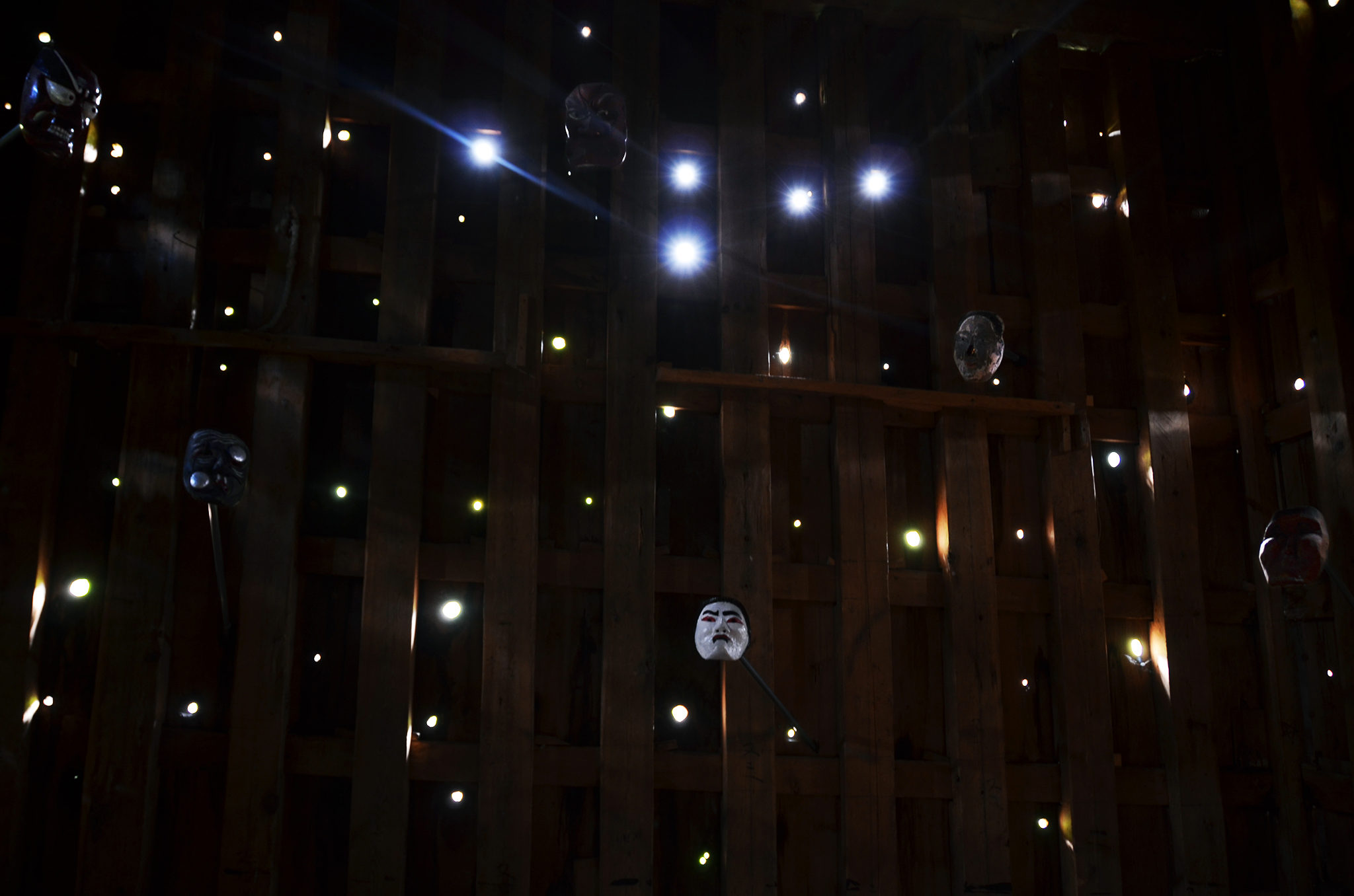
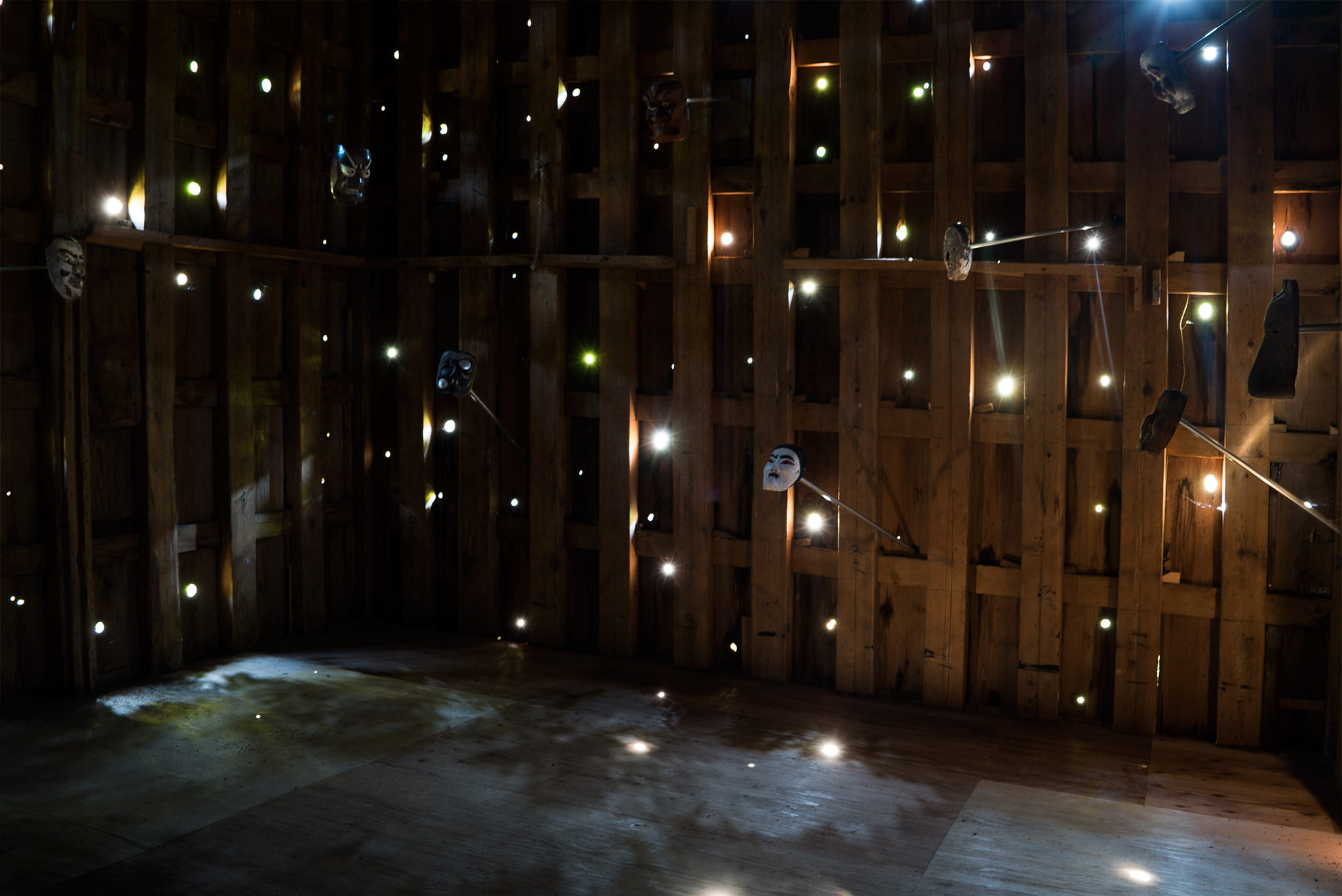
the outside plants and sky make a variety of sunlight colors and they shine in through the knothole
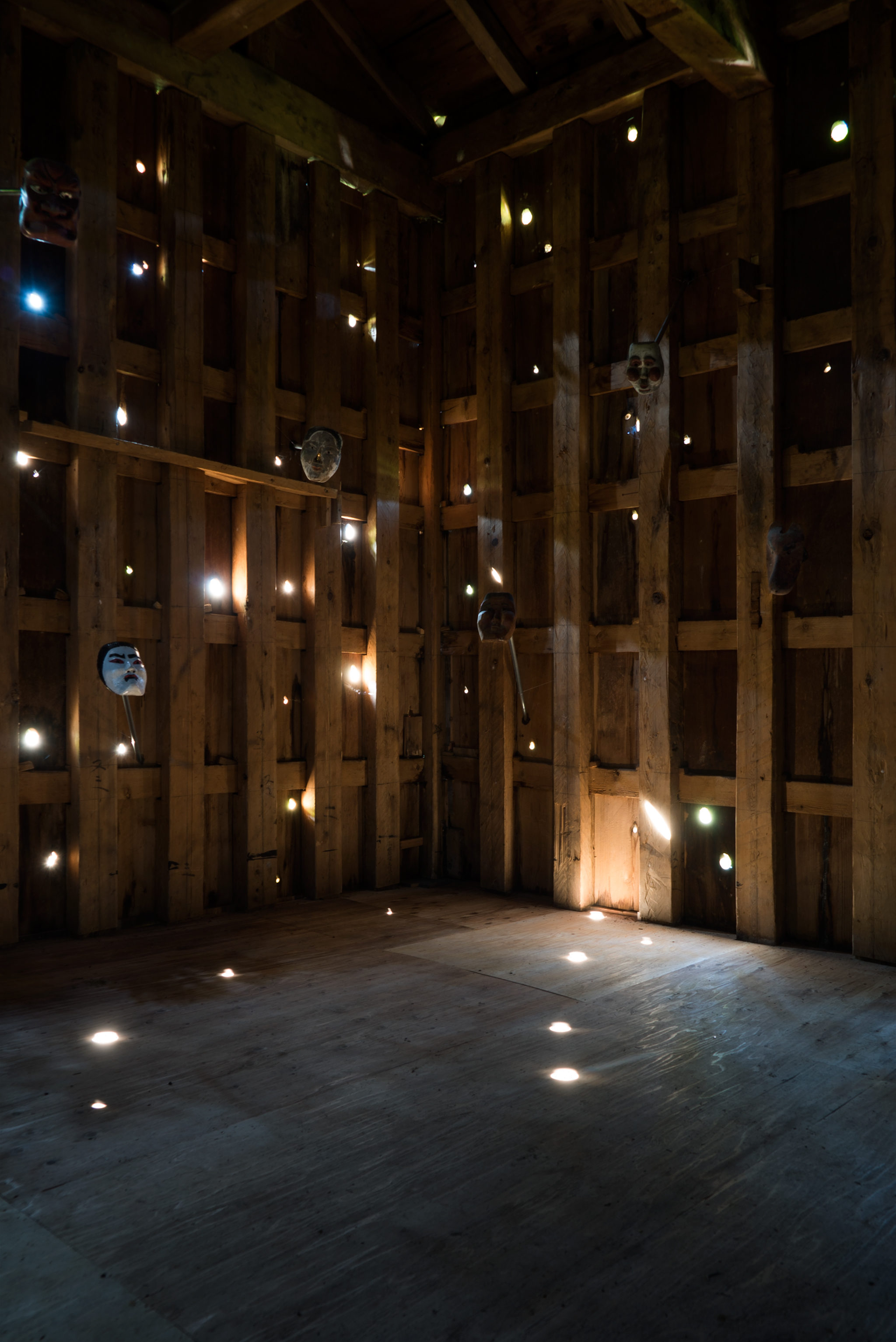
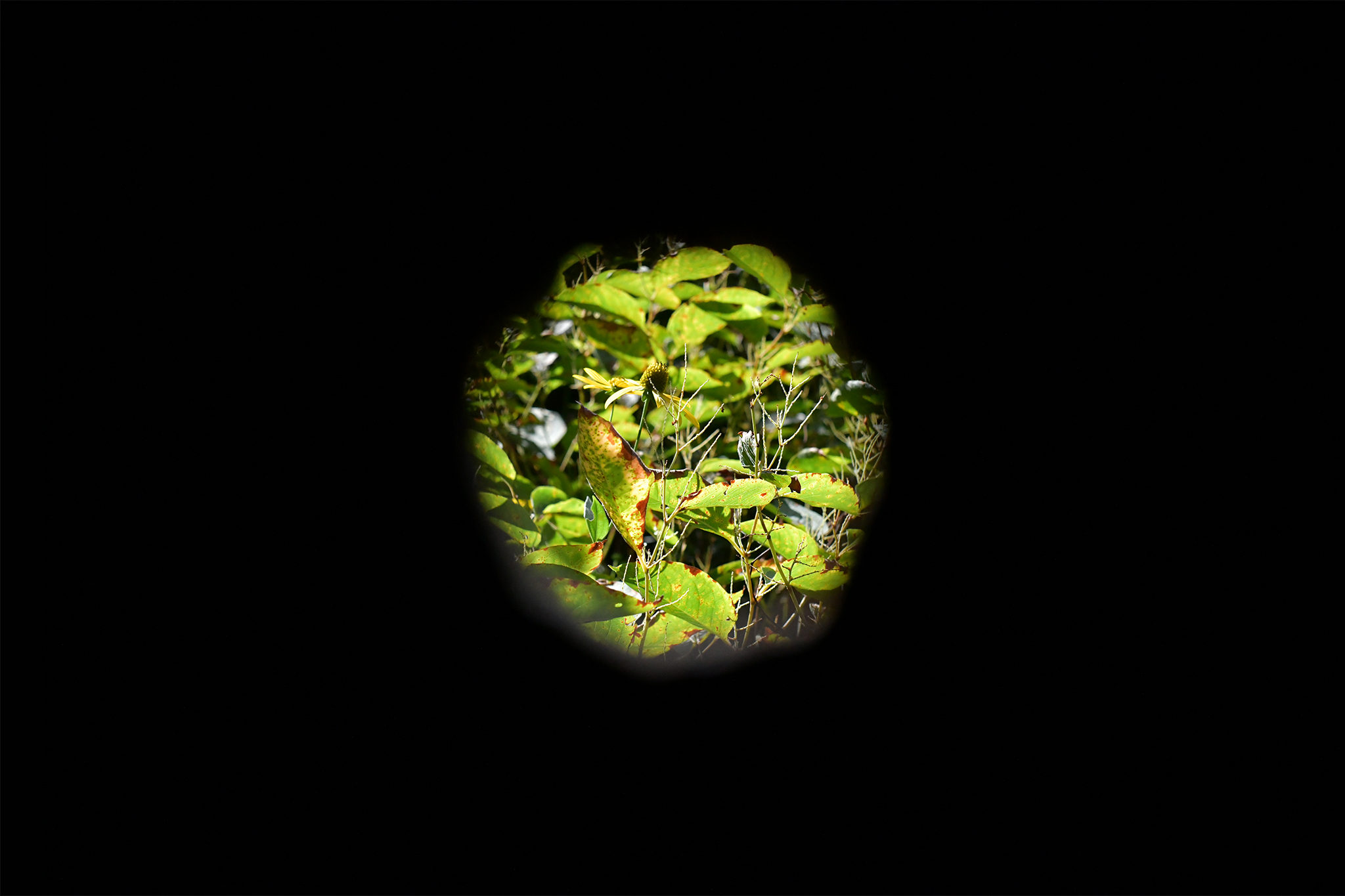
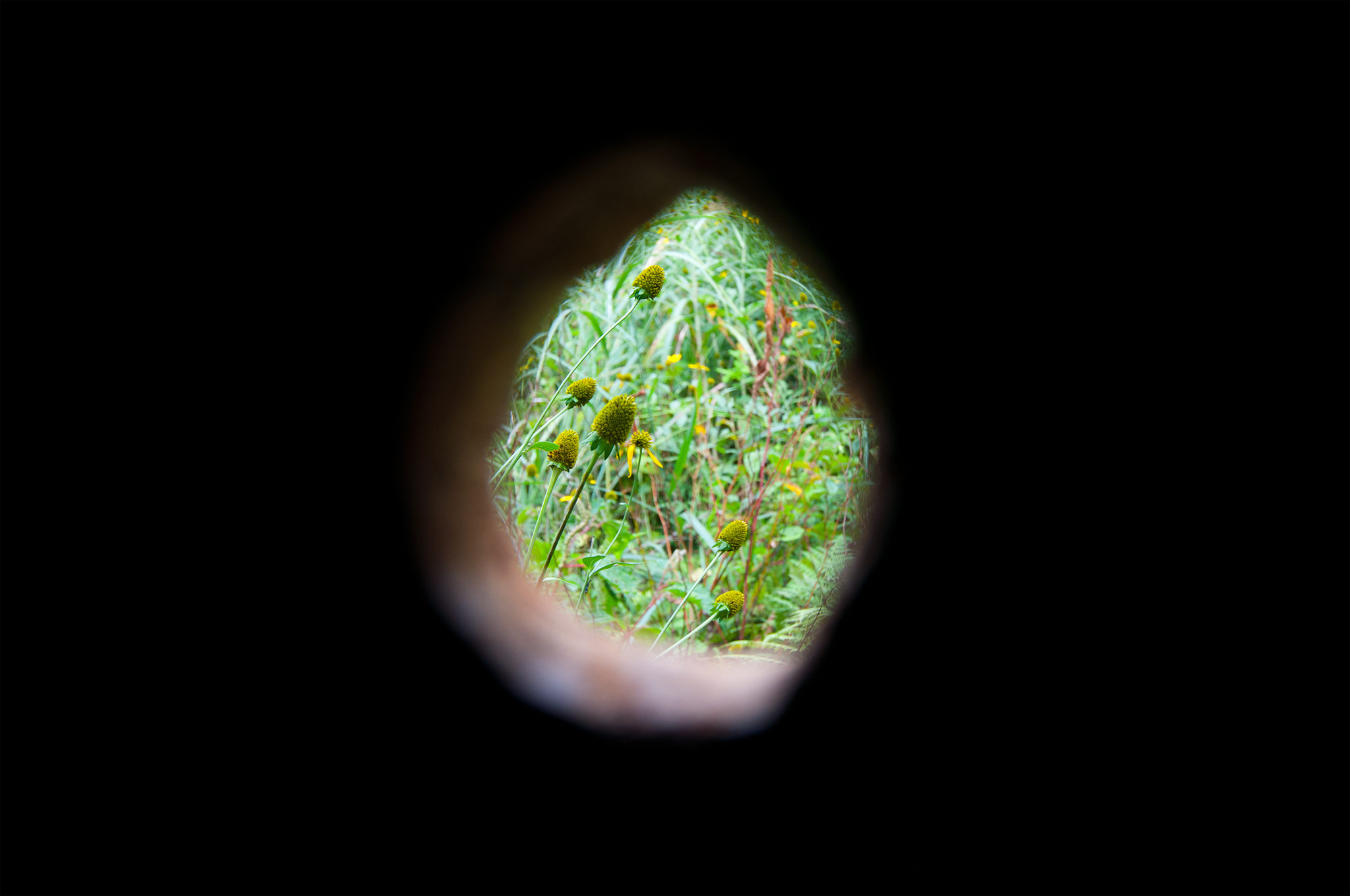
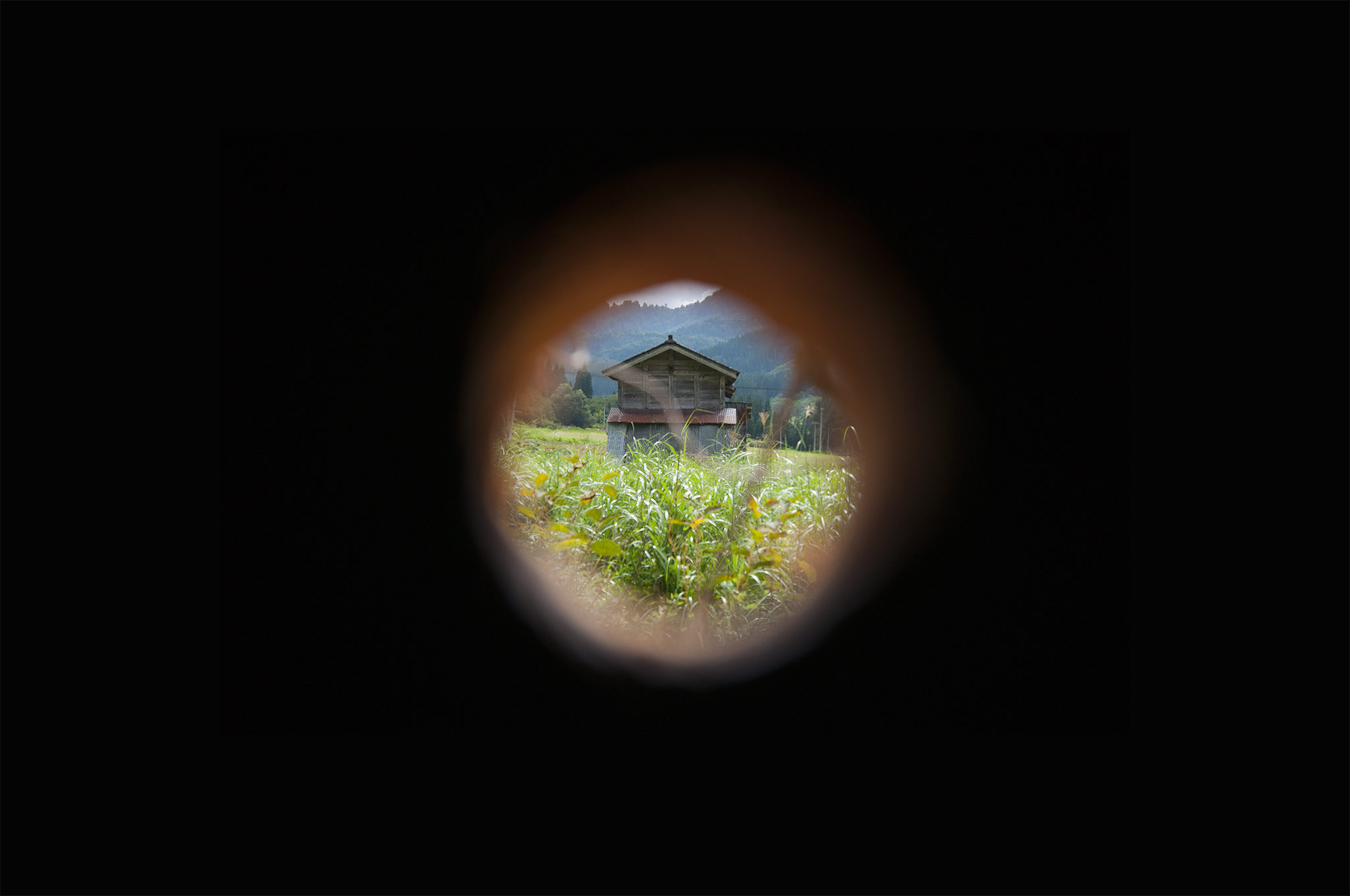
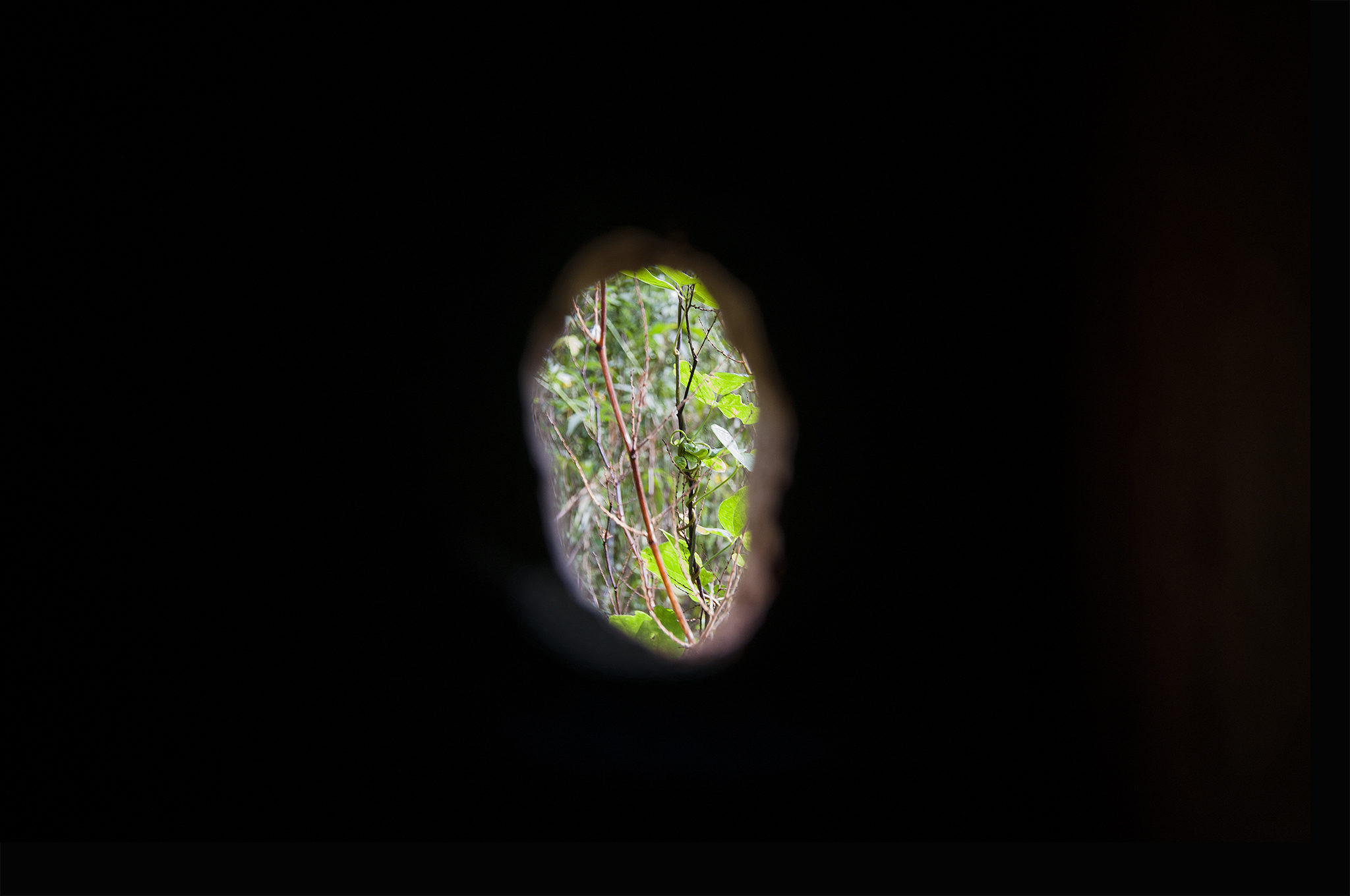
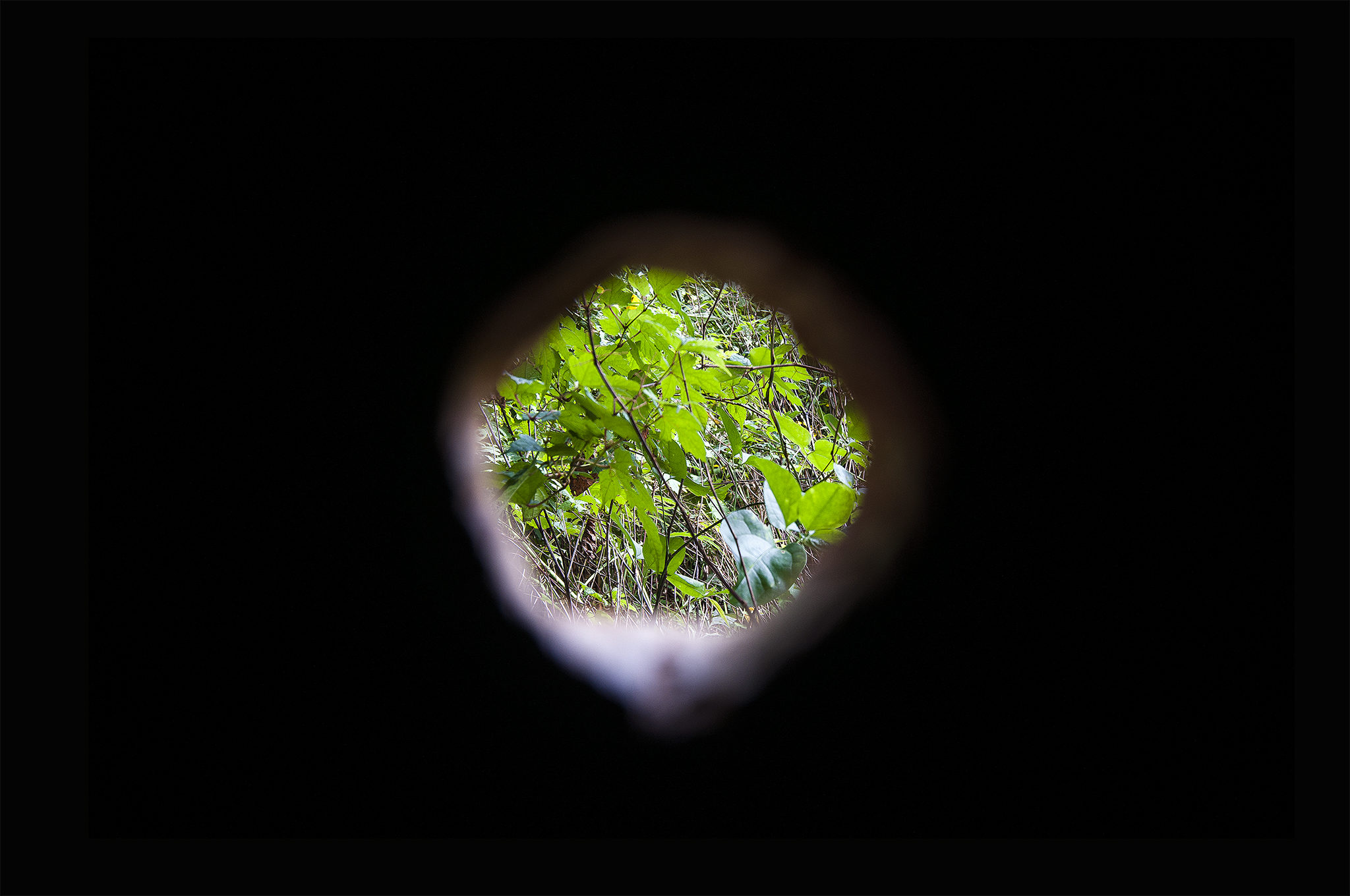
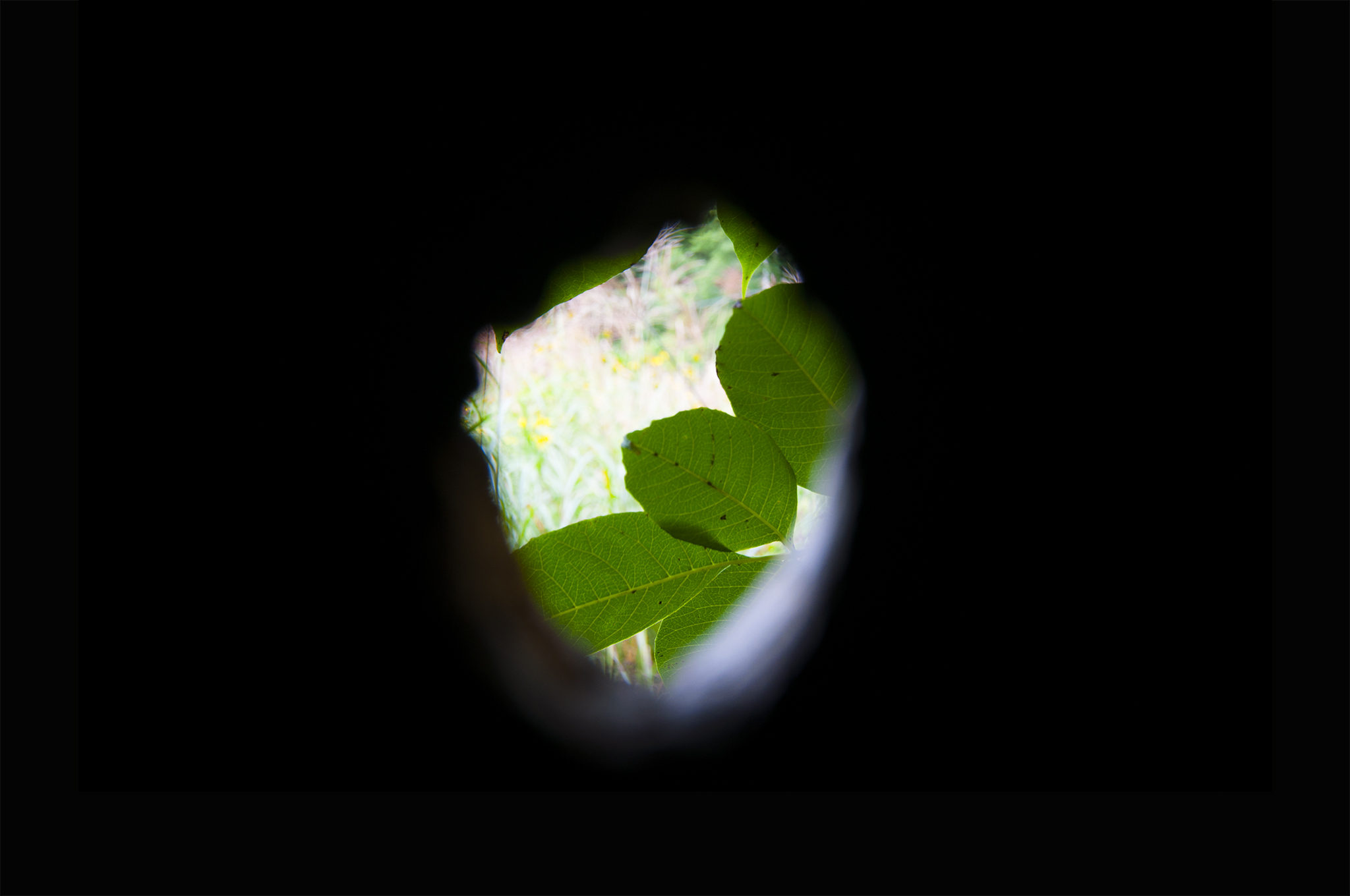
views through each knothole
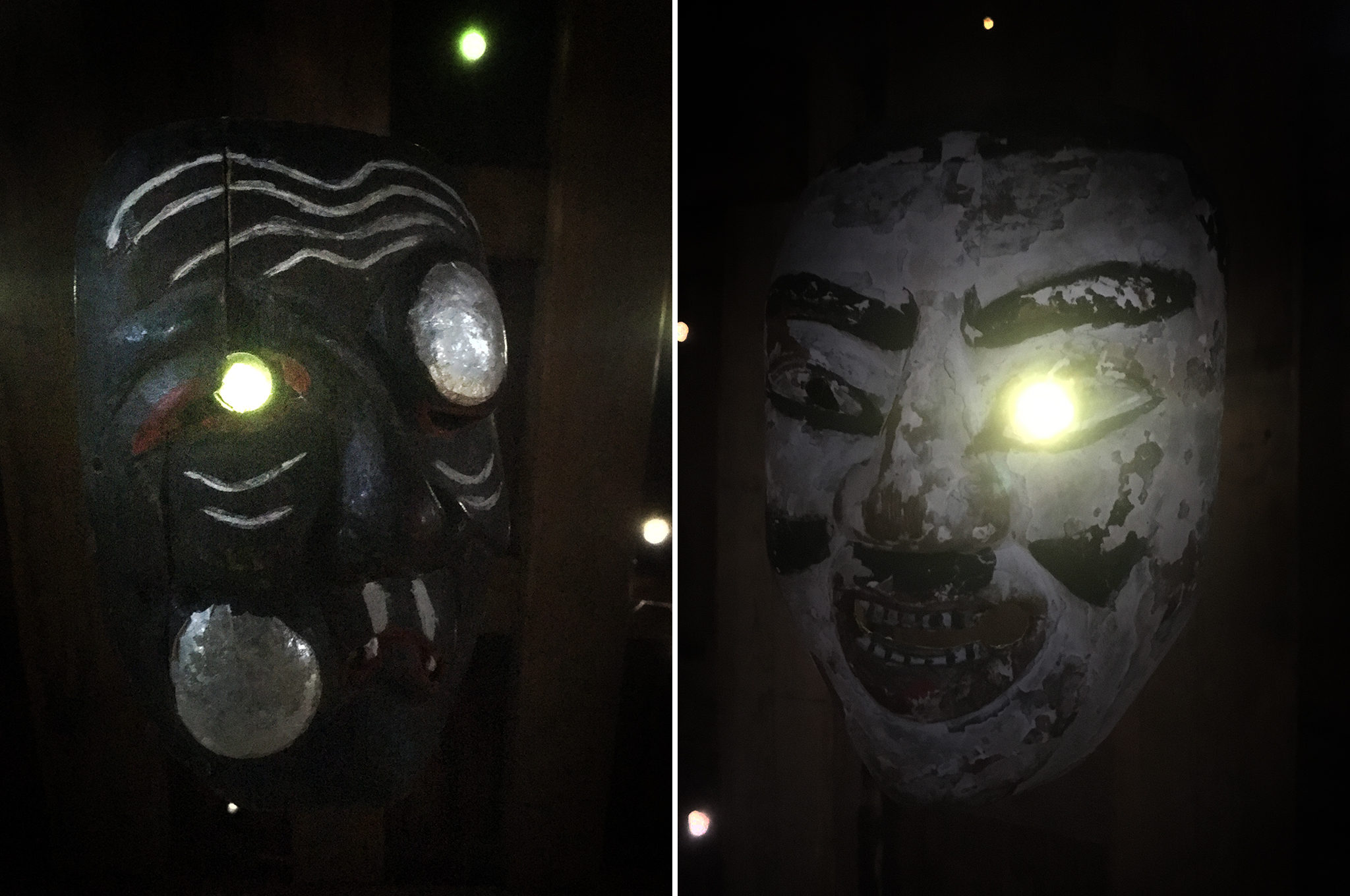
sunlight through the eyehole of mask
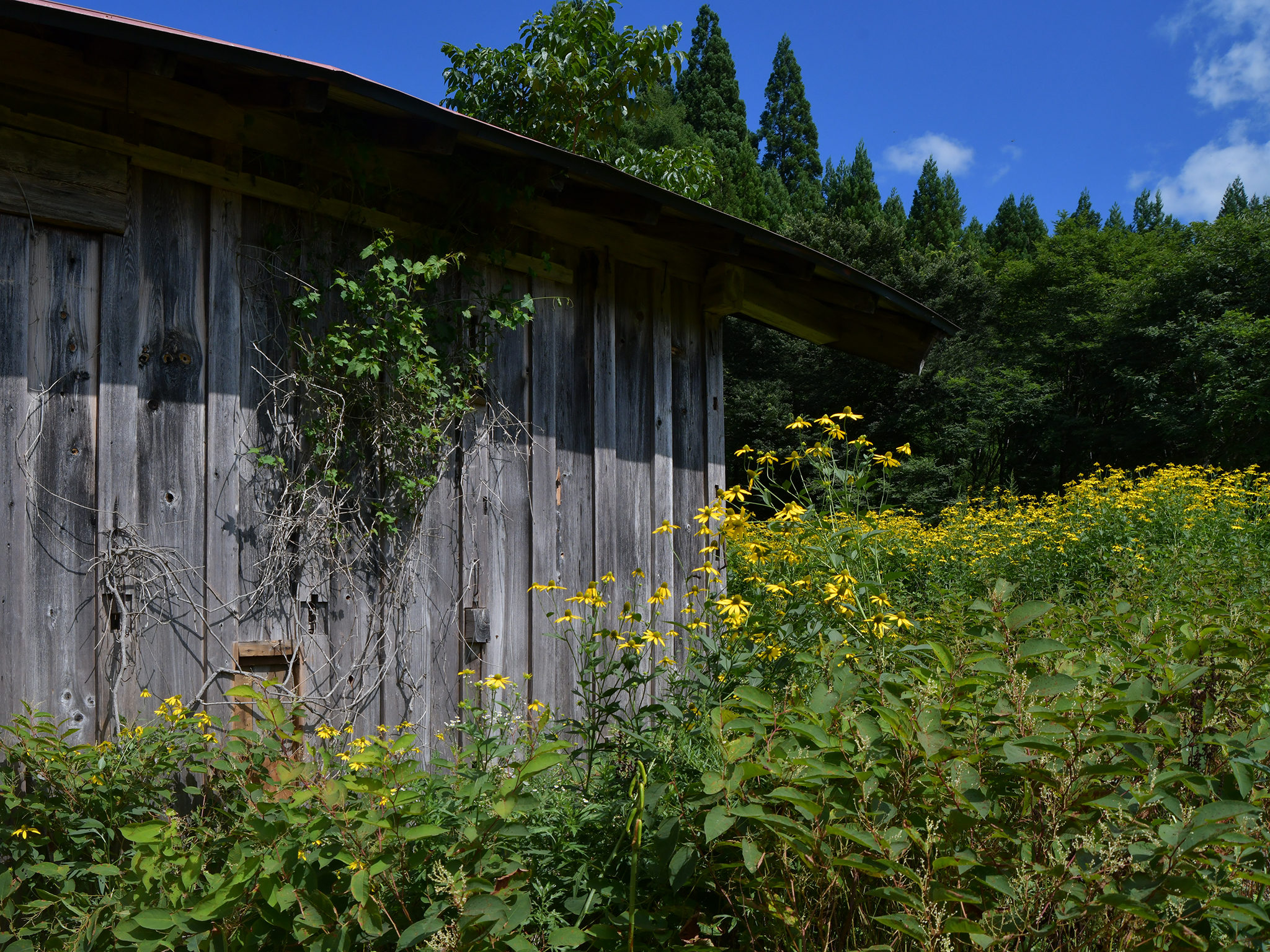
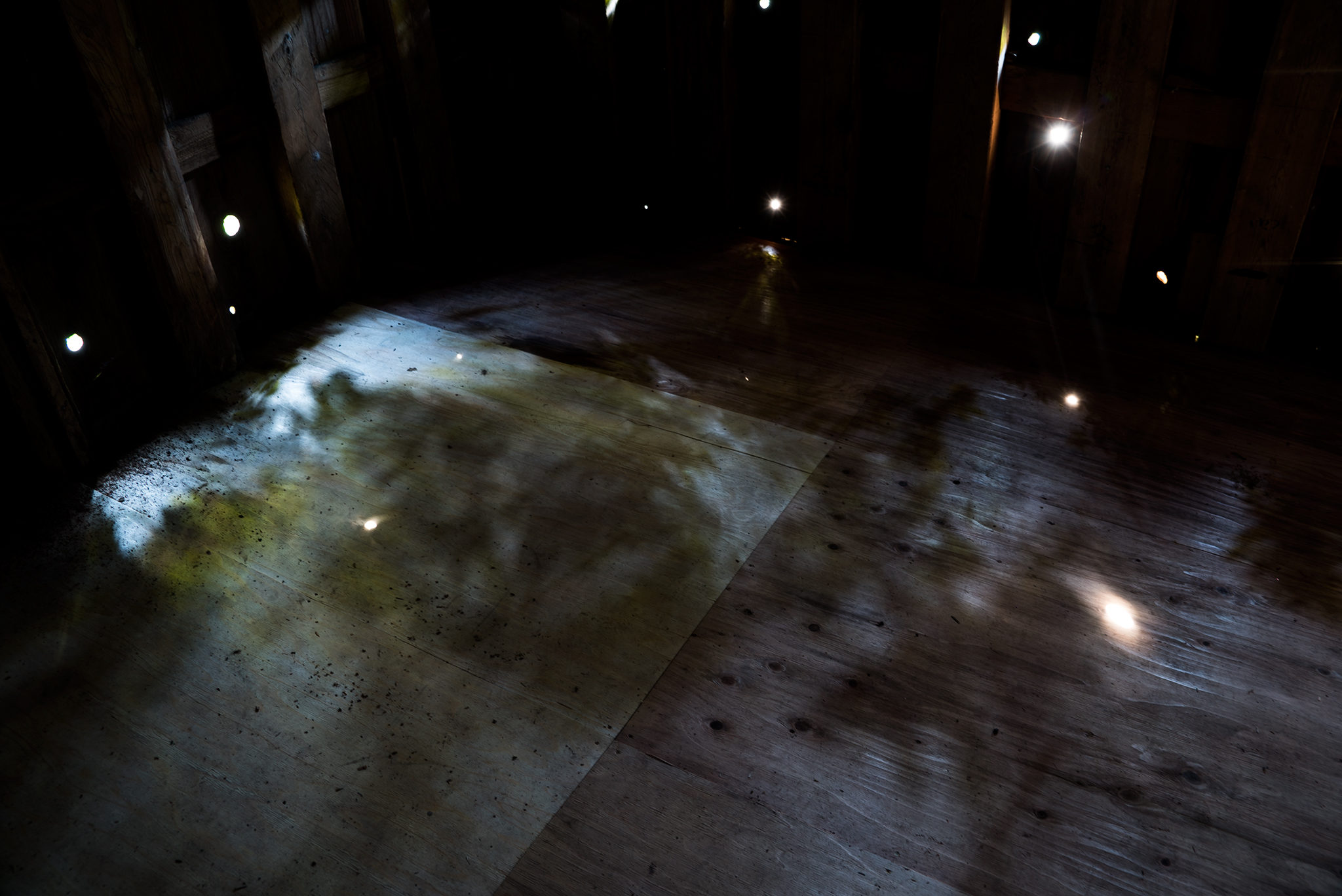
the outside view is projected on the inside floor by pinhole phenomenon
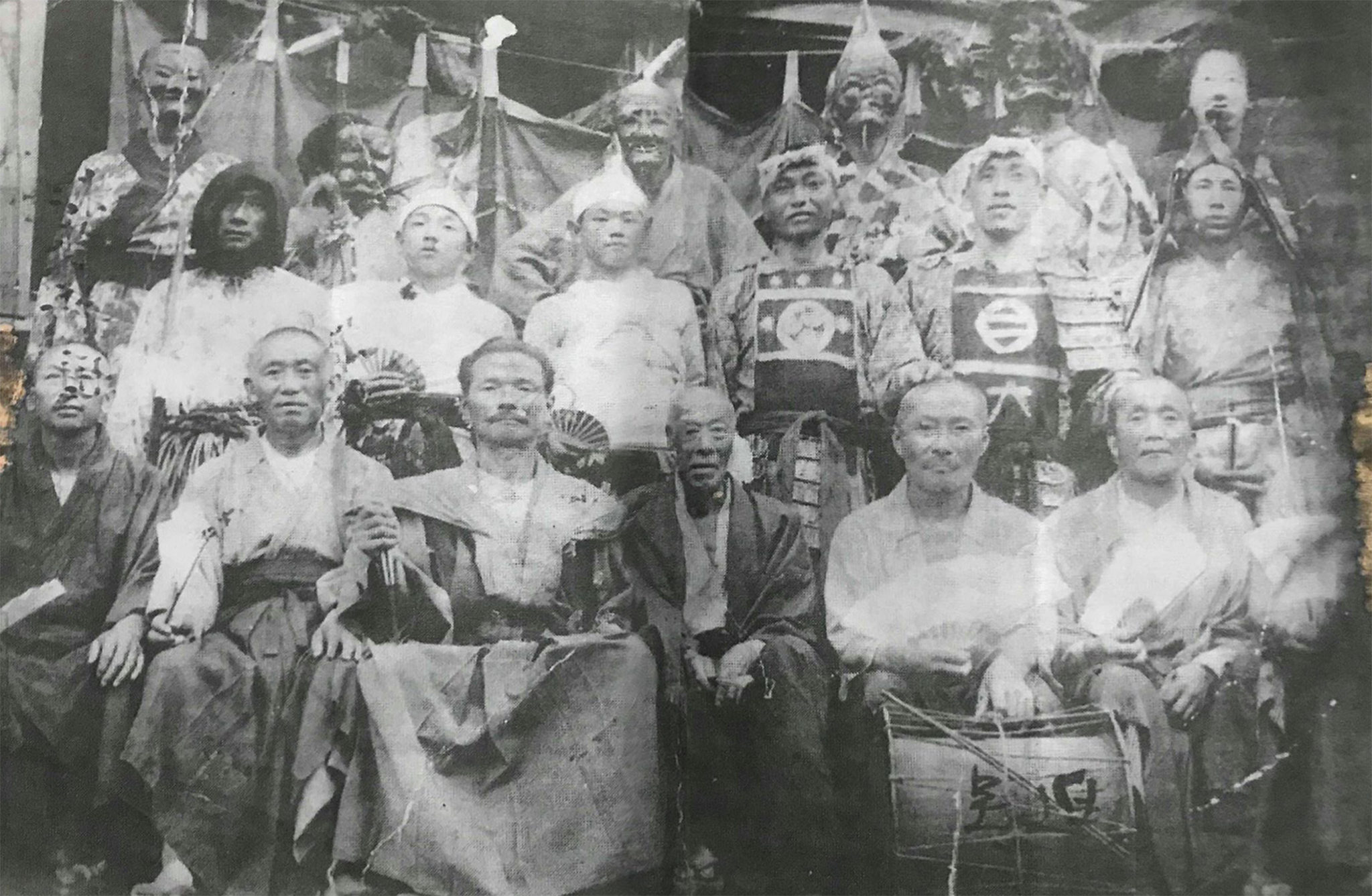
the performers of Yagisawa Bangaku (around 1942)
From the forest trees to the woods as the material of the shed.
Even if a tree has been transformed into timber, the knots in the wood are still representing living creatures.
These knotholes expand our perspectives.
And this can resemble the 'it' of Yagisawa Bangaku performers who, by wearing masks, are possessed by someone other than themselves and look at the world through the eyeholes of mask.
The knotholes and eyeholes of mask provide a topological view into our perspective.
We are not blind.
Our eyes are not the hole.
---
* In Kanji, "the eyehole of the mask" can be written as "面目".
And the word "面目" originally means "real life" in the Buddhist term.